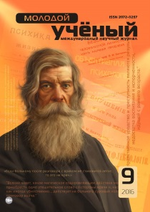In the second part of the XIX century the whole world’s industry was developing. As a result, new types of fuels were being created and used. This in turn caused to emerge new means of transportation «namely pipe transportation». After conquering the Central Asia, Russia planned to use Asia’s natural resources, in this purpose, many scientific expeditions were organized. First of all, the region’s map was made in 1867. In order to map and observing its climate Tashkent metrological station was created. Between the end of the XIX and the beginning of the XX centuries researching of appropriation Central Asia’s natural resources was increased. Famous Russian zoologist and traveler N. A. Seversev observed The Pomirs during his trip. He collected some examples of botanic and geological things.
P. P. Semyonov researched The Tyanshanmountains and collected some interesting information about glacier and volcano. A. P. Fedchenko checked Fergana valley an Oloy as well as Zarafshon valley and Kizilkum. In the result of this, many oil mines were found. And oil pipes were created to carry that oil. In 1908 the first 20 km long oil pipe was made from the mine of Chimyon to Vannovsk (present Altiarik) oil reproducing plant. Afterwards the means of transport started incredibly developing by being opened some mines in Fergana and Surkhandarya. Total length 228.5 oil pipe was built from oil mines to Fergana and Altiarik oil reproducing plants. Large fields of industry were governed by the Soviet Union after conquering the region. In the 20 years of the XX the demand for fuels increased with developing industry and it effected to transport. During the war strengthening of front-line and providing of working plants better were ordered. The basic aim and demand of the motto: «All the things are for front. All the things are for victory» were like that. Such demands caused developing and widening of fuel industry, especially, pipe transportation. In the war years Chuqurlangar, Tolmazor, Nayman, Shaxrihon, Khujaabad, South Olamushuk and other oil mines were built and oil producing increased 4 times and in 1945 it was more than 47800 tons. After the war it started recovering and demands again increased. New pipes were built and urbanization and increasing numbers helped to develop. In 1950 the biggest gas industry were built in Bukhara and Kashkadarya. «UzbekNeftegazRazvedka» researched and Gazle mine which capability 500 billion was found. Also, Muborak, Urtabuloq, Qultak, Shapatti, Uchqir, Jarqoq, Taxiatosh, Korovulbozor oil and gas mines were found. In total more than 100 mines were found in our country and it has 2 trillion m3 gas, 250 million tons oil store. «BukhoroNeftGaz» was set to mine gas and oil in Bukhara in 1959. In 1958–1960 years «Jarqoq-Bukhara-Samarkand-Tashkent» gas pipe was built and on December 2, in1960 the building was finished. Its annual power was 4,5 mlrd m3 gas. In 1960 Northern Sux-Fergana, Northern Sux-Kokand gas pipes were built. In 1959–1965 years in Uzbekistan 37 towns, 71 region-centers, 20 outlying townships and other suburbs had been supplied with gas. 320 industrial factories, more than 3500 communal-social plants and nearly 400 heating pots started working with gas. In 1964–1966 years «Muborak-Tashkent-Chimkent-Bishkek-Almati» gas pipe was built and given to use. A lot of cities of Uzbekistan as well as people of Kazakhstan and Kyrgyzstan used from Kashkadarya’s gas through steel pipes with the length of 1317 km, the diameter of 720 mm. After some times, «Toshkent-Bishkek-Almati» second gas pipes were built and its length was 5686 km (3618 of it in Uzbekistan), its annual power was 23 billion m3 gas. In the biggest mine in Muborak 10 billion m3 gas was mined, and each year used to produce 160000 tons sulfur. Then in 1870–72 years Kokand-Namangan-Andijan pipes with the length of 234 kms were built. In 1874–1878 years Xovos-Fergana were built. Its 425,8 km from 677,8 kms was in Uzbekistan and the others were in Tajikistan. From the gas of Kashkadarya and Bukhara the people of Tajikistan would use as well. At first, Uzbeks were so happy for those finding natural gas mines with a large quantity of resources. Each family dreamed of using gas in their own homes independently. But they were not able to use our own resources as now. And we could not own our mines. It was owned in Moscow by some owners. USSR started using our gas in factories to heat the in usual, in 1961–65 instantly Bukhara-Ural pipe was built. Whose length was approximately 2000 km and its power was 21 billion gas. Central government had not satisfied with this and planned to take Uzbekistan and Turkmenistan’s gas simultaneously. And this plan was called «Central Asia-Center». In 1965–1975 Central Asia-Center gas way with 2750 long was built. It’s both sides way length were 5500 km and it was capable of mining 80 billion m3 fuel and so our gas heated far-far plants and homes. Many uzbek people just looked those pipes with great pain, it was because of dependence of course, in 1985 only 2,8 million homes and 1,3 million in the countries had been gassed, this was all sophisticated aspects of pipe transportation. In the Soviet time pipe transportation was developed but, it had never worked for our nation’s interests!
References:
- Ўзбекистоннинг янги тарихи. Туркистон чор Россияси мустамлакачилиги тарихи даврида / Тузувчилар Содиқов Х. ва бошқ. — T.:Шарк, 2000. Б 564
- Usmonov Q. O’zbekiston tarixi (sovet mustamlakachiligi davrida) — Tashkent: 2014. -B.66.
- Tillaboyev S., Zamonov A. O’zbekiston tarixi (XIX asrning ikkinchi yarmi –XX asr boshlari).-Tashkent: Sharq, 2014, B.125
- Karimov Sh., Jo’rayev N. O’zbekistontarixi. (sovet mustamlakachiligi davrida) — Tashkent: Sharq, 2012,-B. 435.







